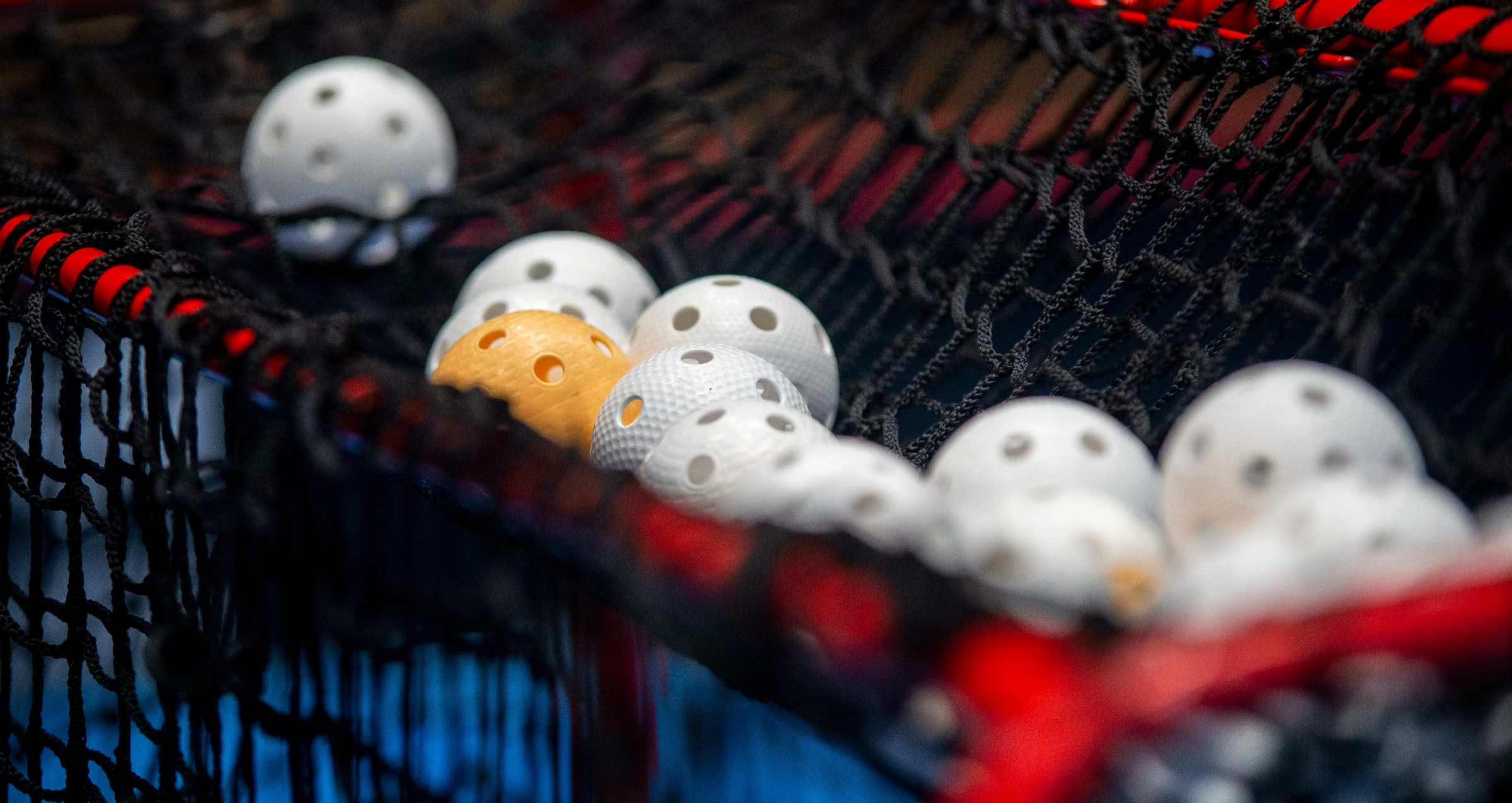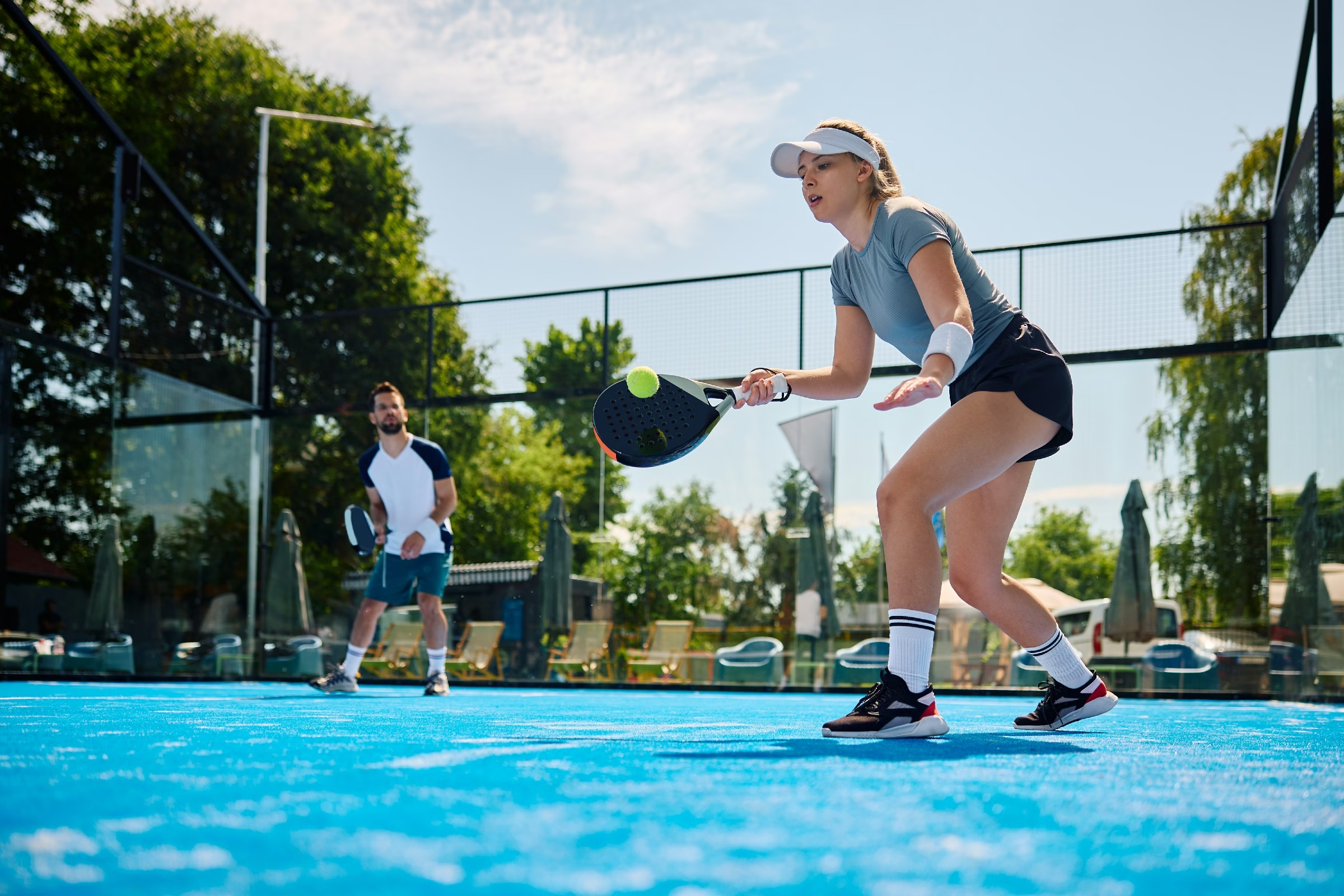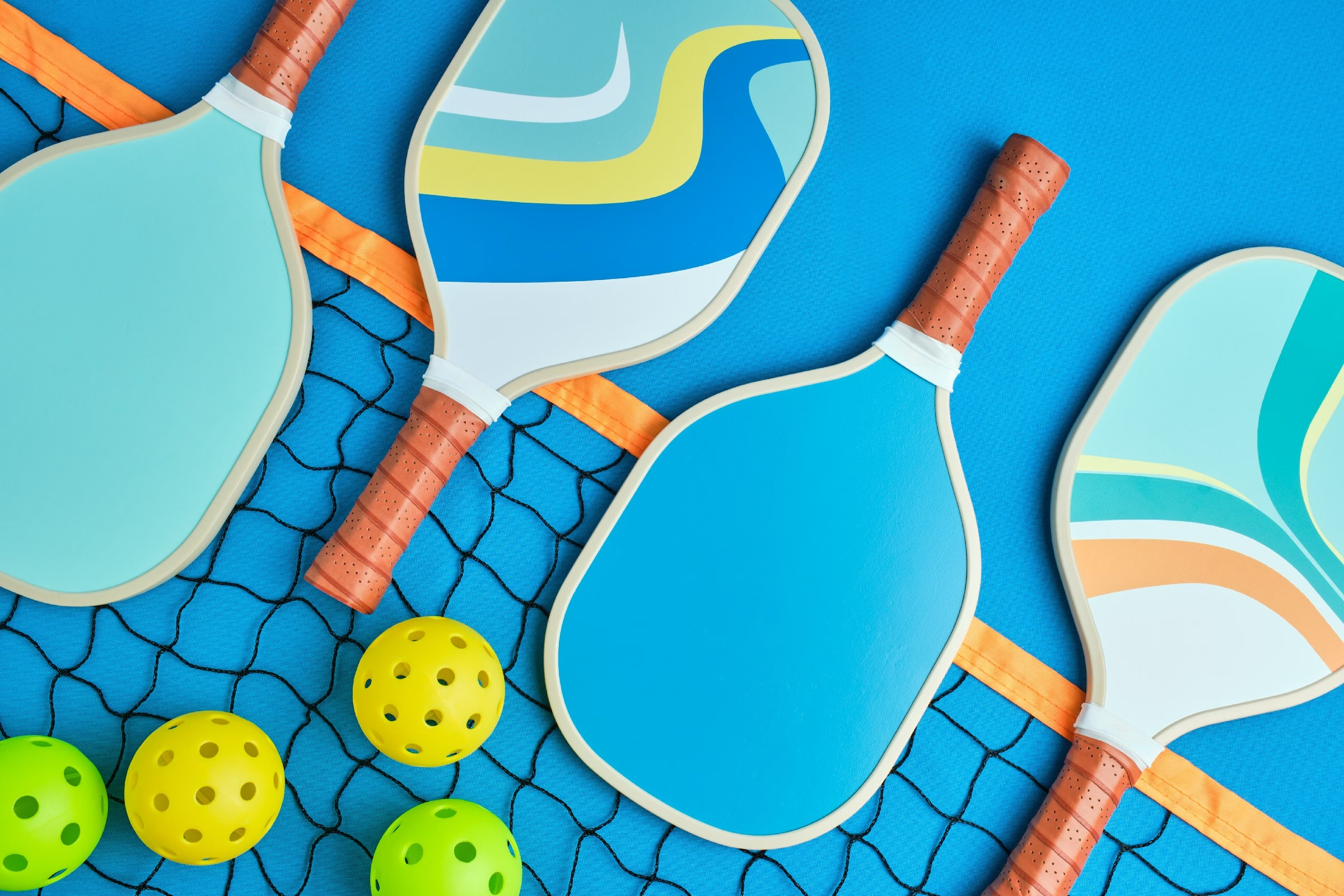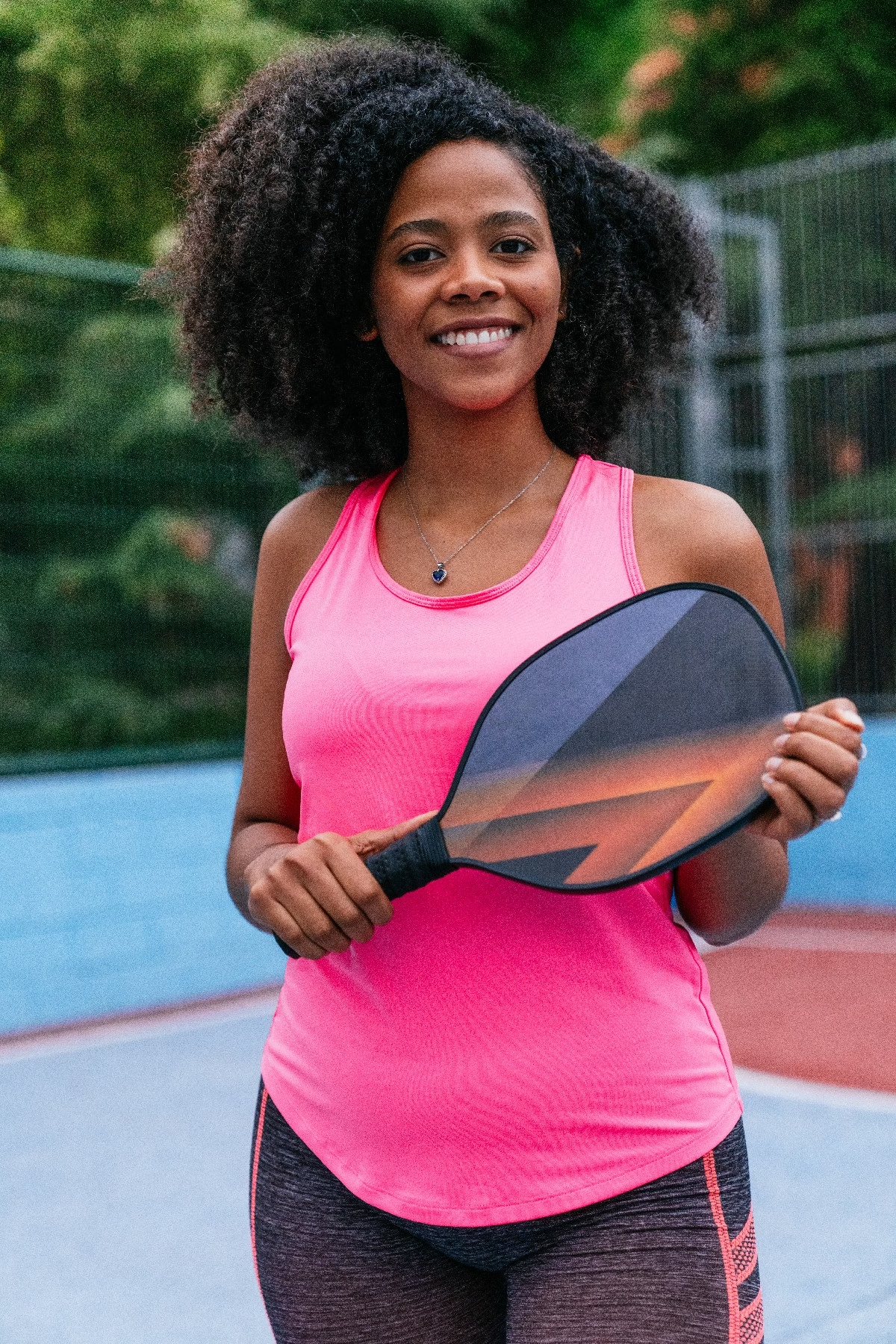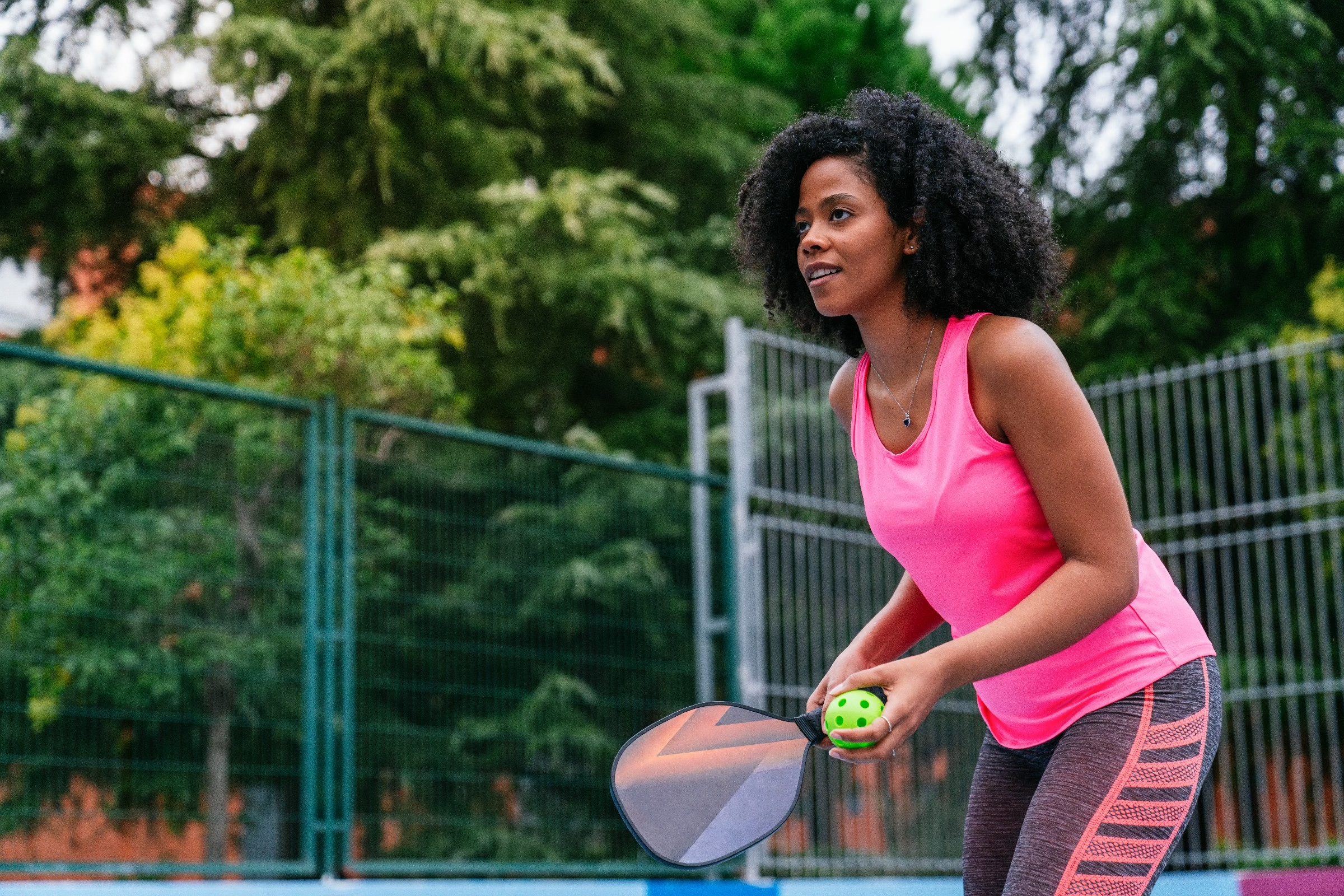Blog
how to make a pickleball court in your backyard

Introduction: transforming Yoru Backyard into a Pickleball Paradise
As the sun rises over your backyard, it casts a warm glow on the potential for laughter, competition, and community that lies within your outdoor space.Imagine trading the sounds of traffic and busy streets for the joyful thwack of a paddle hitting a ball, and the cheerful banter of friends and family enjoying a game of pickleball right at home. whether you’re a seasoned player or a curious beginner, creating a pickleball court in your backyard can transform your outdoor area into a vibrant hub of activity. Not only is this popular sport easy to learn and incredibly fun to play, but it also promotes fitness and social connection. in this article, we’ll guide you through the essential steps to build your very own pickleball court, ensuring you have everything you need to serve up a smashing good time!
Table of Contents
- Choosing the Ideal Space for Your Backyard Court
- Understanding the dimensions and Design Specifications
- Selecting the Right surface Material for Optimal Play
- Incorporating Necessary Equipment and Accessories
- Enhancing Court Visibility and Safety Features
- Planning for Maintenance and Longevity of Your Court
- Q&A
- Concluding Remarks
Choosing the Ideal Space for Your Backyard Court
When selecting the right location for your pickleball court, consider the overall layout of your backyard. Ideally, you want to pick a flat area that is free from obstructions, such as trees, power lines, or large structures that could lead to distractions or block the sun during play. Assess the dimensions of your yard to ensure you can comfortably fit a standard court size, which is 20 feet wide by 44 feet long. Remember that some additional space around the court will enhance gameplay, allowing room for movement and sidelines.
Next, think about the orientation of the court.A court positioned north to south helps players avoid glare from the sun, especially during afternoon games. Additionally, a location that benefits from natural wind breaks—like fences or shrubbery—can definitely help minimize wind interference in your matches. Accessibility is another critical factor; ensure the court location is easily reachable from the house and provides a hassle-free entry for players and spectators alike.
check local regulations and community guidelines regarding structures and noise levels in your area. Some neighborhoods have specific rules about home improvements, so it’s best to start with these before finalizing your court’s design. Consider a variety of surface materials that suit your needs, such as asphalt, concrete, or specialized sports tiles. This can not only enhance your playing experience but also blend aesthetically with your backyard landscape. Below is a simple comparison to help you choose materials:
| Material | Pros | Cons |
|---|---|---|
| Asphalt | durable, affordable | Can crack with temperature changes |
| Concrete | Long-lasting, strong | More expensive, can be hard on joints |
| Sports Tiles | Shock-absorbent, customizable | May require more maintenance |
Understanding the Dimensions and Design Specifications
Creating the perfect pickleball court in your backyard starts with understanding the official dimensions. A standard pickleball court measures 20 feet wide by 44 feet long for both singles and doubles play. This equates to a total area of 880 square feet, which is relatively compact, making it an ideal fit for most backyards. The lines marking the court should be 2 inches wide, painted using a non-slip, outdoor court paint that is durable against the elements.
In addition to the dimensions of the court itself, it’s essential to account for clearance space around the playing area. Ideally, you should have a minimum of 3 to 5 feet of buffer zone on all sides of the court. This additional space allows players to move freely, reducing the risk of injuries and enhancing the overall playing experience. Consider the layout of your backyard and whether any structures—such as fences or trees—might encroach on this space.
| Dimension | Measurement |
|---|---|
| Width of Court | 20 feet |
| Length of Court | 44 feet |
| Buffer Zone | 3-5 feet |
| Line Width | 2 inches |
As you plan out your court, it’s not just about measurements; consider the type of surface you’ll be using.Options such as asphalt,concrete,or a specialized pickleball court surface each provide unique playing characteristics. A firm, flat surface is crucial for gameplay, ensuring a consistent bounce of the ball. Also,think about the orientation of the court—ideally,it should be positioned to minimize the impact of the sun on players during peak playing hours,which typically run from late morning to afternoon.
Selecting the Right Surface Material for Optimal Play
When choosing the surface material for your backyard pickleball court, it is essential to consider several factors that will influence the quality of play and maintenance. Acrylic coatings offer a popular and durable choice, known for their smooth playing surface and vibrant colors. This material provides excellent ball bounce and allows for swift gameplay, making it ideal for both recreational and competitive players. Additionally, the acrylic finish is easy to clean and maintain, ensuring your court looks fresh with minimal effort.
Another viable option is synthetic grass, which can give your backyard a more natural aesthetic while providing a reliable playing surface. This material is forgiving on the joints,reducing the risk of injuries during longer play sessions. Synthetically designed grass courts also drain well, helping them remain playable after rain, but may require more upkeep to maintain their appearance over time. If you opt for this surface, be sure to choose a high-quality product specifically designed for sports to ensure optimal performance.
If you are looking for a budget-kind solution, consider utilizing concrete or asphalt. These surfaces are incredibly durable and can withstand the wear and tear of frequent play. While they may not provide the same bounce and speed as acrylic or grass, they can be painted with appropriate pickleball court markings and offer a solid playing field. To enhance the playing experience, be sure to apply a textured finish or sealant to improve grip and comfort. Depending on your desired aesthetic and budget, these options allow for versatility in design and functionality.
Incorporating Necessary Equipment and Accessories
To create the ultimate backyard pickleball court, it’s crucial to consider the necessary equipment and accessories that will enhance your game experience. The most vital component is, of course, the pickleball net.A regulation net is 36 inches high at the sidelines and 34 inches at the center. Ensure it’s properly tensioned for a good workout and enjoyable play. Look for nets that are easily transportable, featuring a quick setup mechanism, so you can enjoy spontaneous games.
In addition to the net, having the right pickleball paddles and balls is essential. Choose paddles that are lightweight yet durable, designed for optimal control and power. You might also want to have a mix of paddles for different player preferences.For the balls, opt for both indoor and outdoor varieties, as they are made from different materials and have distinct characteristics regarding bounce and speed:
| Type | Material | Best Use |
|---|---|---|
| Indoor | Plastic with holes | Indoor courts |
| Outdoor | Hard plastic | Outdoor courts |
consider additional accessories to elevate your court’s functionality.Court lines are a must for maintaining proper boundaries; you can use removable tape or chalk for temporary setups. Other useful items include a ball holder to keep your playing area tidy and water bottles for hydration during intense games. Including a scoreboard can also add a competitive edge and make it easier to track results, especially if you host friendly matches with friends and family.
Enhancing Court Visibility and Safety Features
When constructing your backyard pickleball court, enhancing visibility and safety is crucial for an enjoyable playing experience. First, consider the lighting setup. Adequate lighting not only extends your playtime into the evening but also enhances visibility during the day. Here are some suggestions:
- Install LED floodlights around the perimeter of the court.
- Use adjustable pole lights to direct brightness where needed.
- Ensure lights are shielded to minimize glare for players.
Equally important is the court surface. Opt for materials that reduce the risk of slips and falls.A textured surface minimizes accidents, and using a combination of materials can enhance the grip. Here’s a quick overview of some popular options for surfaces:
| Surface Type | Benefits | Considerations |
|---|---|---|
| Asphalt | Durable, Budget-friendly | Can get hot on sunny days |
| acrylic | Vibrant colors, Good grip | Requires regular maintenance |
| Composite | Shock-absorbent, Safe | Can be more expensive |
Lastly, consider incorporating boundary markers and nets. clearly defined boundaries not only enhance gameplay but also contribute to safety by reducing confusion. Use highly visible paint or tape to mark the lines, and invest in quality nets. Ensure that they are tensioned properly to avoid sagging, which can be a tripping hazard. Here’s a quick list of marker ideas:
- Fluorescent paint for court lines.
- Safety nets that are tall enough to prevent stray balls.
- Reflective tape around the court edges for nighttime play.
Planning for Maintenance and Longevity of Your Court
To ensure the durability and performance of your pickleball court, it is critical to establish a complete maintenance plan. Routine inspections will help identify wear and tear early on. Consider the following practices to maintain the surface of your court:
- Regular Cleaning: Sweep away debris such as leaves and dirt to prevent damage over time. Use a hose to wash off any stains or substances that can impact the court’s grip.
- Surface Conditioning: Depending on the material of your court, periodic resurfacing or sealing could be necessary to restore texture and prevent moisture infiltration.
- Net maintenance: Inspect your net for frays or sagging. Replacing it every couple of years ensures an optimal playing experience.
Weather conditions can take a toll on your court, so adjusting maintenance routines according to seasonal changes is essential. For instance:
| Season | Maintenance Tasks |
|---|---|
| Spring | Inspect the surface, clean debris, and check net tension. |
| Summer | Frequent cleaning, shade provisions to avoid surface overheating. |
| fall | Remove leaves and prepare for winter; check for cracks. |
| Winter | Clear snow and ice; consider winter covers if necessary. |
Lastly, investing in quality materials from the start will considerably enhance the longevity of your court. When selecting your court surface materials, prioritize those designed to withstand varying weather conditions and foot traffic. Choose durable fencing and netting to encapsulate your court, providing not just an aesthetically pleasing look but also safeguarding your investment against external elements. By implementing these strategies, you create a welcoming space that’s ready for friendly matches for years to come!
Q&A
Q&A: How to make a Pickleball Court in Your Backyard
Q: What is pickleball, and why should I consider building a court in my backyard?
A: pickleball is a fun, fast-paced racquet sport that combines elements of tennis, badminton, and ping pong. With its rising popularity, having a dedicated court in your backyard not only allows for convenient play but can also enhance social gatherings and promote a healthy, active lifestyle.
Q: What are the dimensions of a standard pickleball court?
A: A standard pickleball court measures 20 feet wide by 44 feet long for both singles and doubles play. If you have the space, allowing for an additional buffer zone around the court (at least 5 feet) will enhance playability and safety.
Q: What materials do I need for constructing a pickleball court?
A: To build your pickleball court, you’ll need the following materials:
- Surface Material: Options include asphalt, concrete, or sport tiles. Choose a durable surface for optimal gameplay.
- Paint: Use high-quality paint suitable for outdoor use to mark the court lines.
- Net and Posts: Purchase a pickleball net and sturdy posts to keep the net taut.
- Boundary Markers: Consider using temporary or permanent markers to help designate the playing area.
Q: How do I choose the right location for my court?
A: Look for a level area in your backyard with plenty of sunlight and minimal obstructions. Avoid sites with overhanging trees, fences, or structures that might interfere with gameplay. A flat surface is critical for ensuring the ball bounces consistently.
Q: Can I DIY the construction of the court, or should I hire professionals?
A: It depends on your comfort level with DIY projects! If you’re handy and have the necessary tools, building the court yourself can be a rewarding adventure. Though, if you prefer professional help or are uncertain about the technical aspects, consider hiring a contractor experienced in sports court installations.
Q: What is the best way to mark the court lines?
A: Use a chalk line or painter’s tape to outline the court dimensions.After marking, paint the lines using a high-quality outdoor paint.Ensure that the lines are 2 inches wide and are white for better visibility against the court surface.
Q: How can I maintain my pickleball court once it’s built?
A: Regular maintenance is key for longevity. Sweep the court to remove debris, and rinse it off occasionally to prevent dirt build-up. Check the net height and tension regularly, and reapply paint to the lines as necessary to keep them visible.
Q: Are ther any local zoning regulations or permits I need to consider?
A: Before starting your project,check with your local zoning office or HOA regulations about building a sports court in your backyard. Some areas may require a permit or have specific guidelines regarding construction and dimensions.
Q: What’s the most important tip for someone planning to build a pickleball court?
A: Plan ahead! Take the time to measure your space accurately and decide on location, dimensions, and materials before you start construction. A well-thought-out plan can save you time and frustration down the line,ensuring a smooth build process and a court that you’ll love for years to come.
With these questions answered, you’re on your way to creating the perfect pickleball paradise right in your backyard! Enjoy the game, stay active, and embrace the fulfilling experience that comes with building your own court.
Concluding Remarks
As you put the finishing touches on your backyard pickleball court, take a moment to envision the countless games, laughter, and friendships that will unfold in this vibrant space. Whether you’re a seasoned player or just starting to discover the joys of the sport,having a dedicated court at home invites community,competition,and camaraderie right to your doorstep. With a few simple steps, you’ve transformed a patch of grass or concrete into a hub of activity, where sunshine and exercise merge effortlessly. So grab your paddles, invite your friends, and relish every serve—your backyard retreat is ready, and the game awaits. Happy playing!


